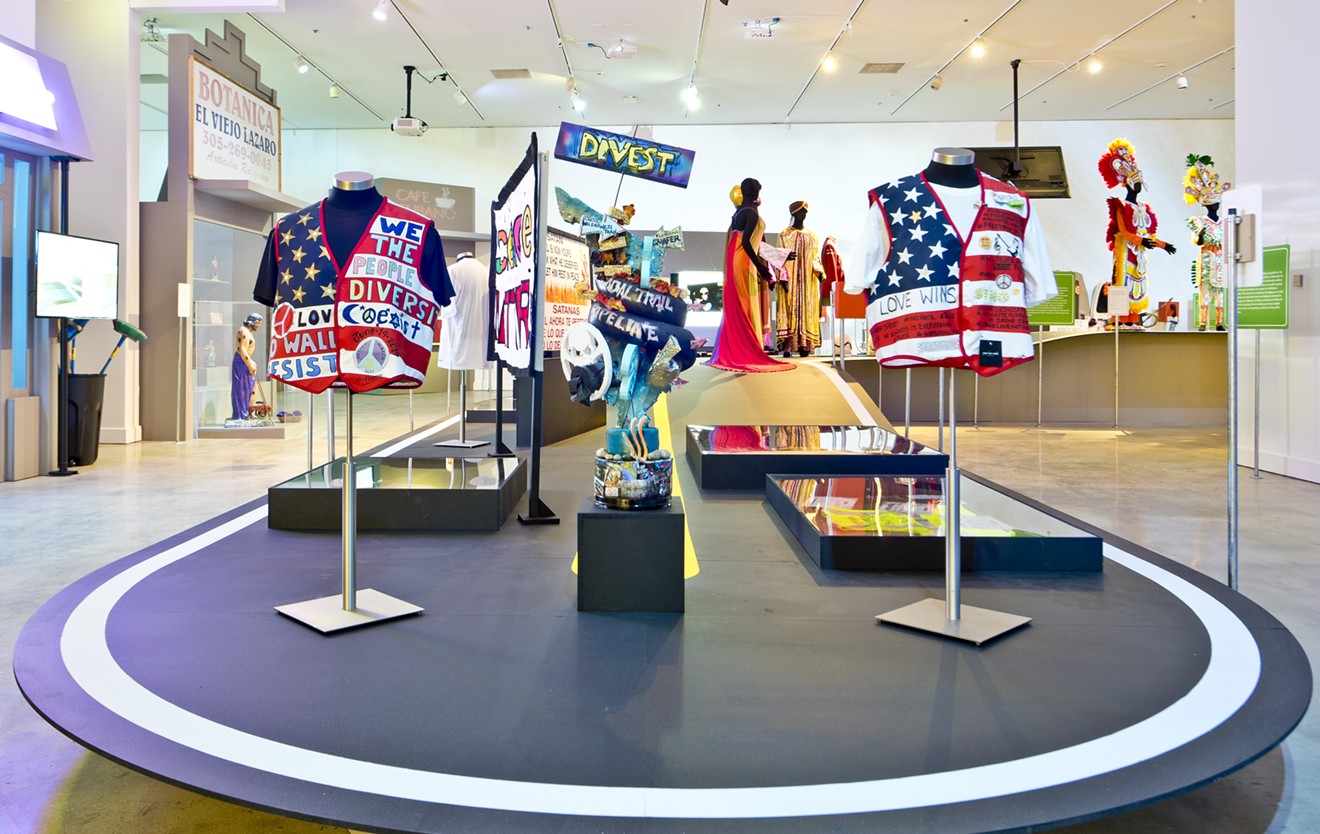Earning a spot and a mention on a white plaque within the halls of a museum is unattainable for most people, but in "Avenues of Expression," even the unlikeliest of characters get a moment to share a slice of their lives with the public. Street artist William Maday, who is homeless and lives on the streets of Wynwood, creates mini sculptures out of palm fronds, some of which are on display in "Avenues."
"Homelessness is not a street tradition, but there are traditions within the homeless community that are passed down," HistoryMiami folklife specialist Vanessa Navarro says. One of the themes of the exhibition is "hiding in plain sight," she says. "It's the idea that these are things you see every day, but you might not know what goes into it."

Fictitious Little Haiti storefront "Tififi" and A-frame sign from the Original Unisex Beauty Salon, painted by Serge Toussaint.
Courtesy of HistoryMiami
All of the items on display are contemporary pieces. Some of the more poignant artifacts document the ongoing political and social movements happening locally and nationally. One of these items is the rainbow-hued dress that drag queen Tiffany Fantasia wore at Miami Beach Gay Pride in 2016, when she was confronted on the parade route by a street preacher. Fantasia sings the same gospel song she sang to the preacher — "What God Has for Me, It Is for Me" — in a phone-booth recording.
Protest signs and other ephemera from last year's Artist March and the Florida March for Black Women are also on display near Fantasia's dress, alongside pots and pans used to celebrate the false alarms and eventual demise of former Cuban dictator Fidel Castro. Navarro says archivists must act quickly to preserve these artifacts. She says she often attends the marches and asks for participants to donate their signs onsite or gives them her card if they wish to do so at a later time.
"At the end of the day, this is stuff that is available and accessible to all of us," Navarro says, adding that its lessons should spill back out from inside the museum and into the street. "It's kind of like inviting people to go take a walk through their neighborhoods and see what they can learn."
"Avenues of Expression." Through January 13, 2019, at HistoryMiami, 101 W. Flagler St., Miami; 305-375-1942; historymiami.org. Admission costs $10 for adults, $8 for students and seniors, and $5 for children aged 6 to 12; members and kids under 6 get in free.












